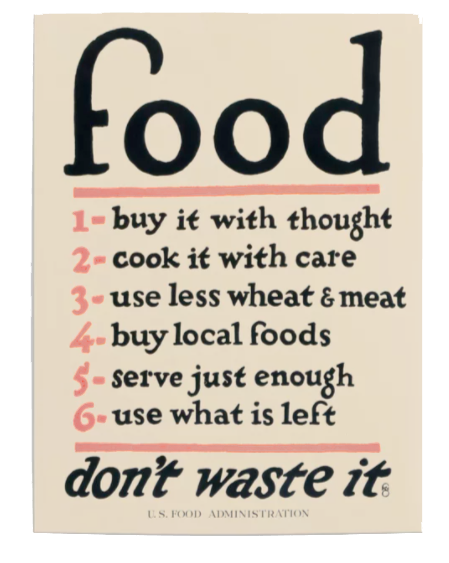Weekly Challenge
Week 13: Good Food Gone Bad
It’s Food Waste Prevention Week, so for this week’s challenge we’re teaming up with our favorite warrior in the fight against food waste, Gwenn Nolan of Mother Compost!
Food For Thought: Farm to Fork to Landfill
When you toss uneaten food in the trash, you’re not just throwing out one apple or tomato.
All of the energy and resources that go into it—the water, the harvesting, the labeling, the packaging, the transport, the storage—all of that’s thrown away at the same time.
In the US, getting food from farm to fork eats up 50% of our land and swallows 80% of all freshwater consumed.
NRDC
24.1% of all landfilled solid waste is food—35 million tons; the largest single category.
EPA
US households throw away up to $2,275 of food annually. That’s about $165 billion in food annually across America.
NRDC
Be a Waste-not Warrior
Using the Five R’s to curb food waste not only saves food; it saves money, saves the planet, and fights food and water insecurity.
Food waste is a huge problem, but there are many simple shifts we can make. The EPA gives lots of great guidance on how to prevent food waste at home; but for now, let’s challenge ourselves to pick one or two of these low-hanging fruits this week:
At the Grocery
- Rescue the funny-looking produce that’s destined for the dumpster
- Shop the bulk bins to buy just what you need
- Be savvy with “sell by” & “best before” (Hint: Everything we’ve been told about them is probably wrong)
At Home
- Do a pantry, fridge, and freezer audit and shape those items into meals
- Make a weekly meal plan and grocery list
- Track it
- Write the date on leftovers
- Start an “Eat me first” pantry bin / fridge shelf / fruit bowl
- When food does go bad, ask: What am I buying too much of? What am I always throwing away?
- Get friendly with your freezer (freeze almost anything)
- Give away extra or unwanted food to neighbors and those in need:
- Drop it off at the Narberth Food bank or find one near you
- Pop it inside a Little Free Pantry
- Offer it up in your Buy Nothing group.
- Short on time? These local businesses help you choose just what you need get home-cooked meals on your table in a hurry:
- Pinwheel Provisions in Narberth
- HomeCooked in Paoli
Now What?
You’ve refused, reduced, repurposed, and tried to gift it; but you still have food waste and scraps. Next stop: rot.

Diverting food from the landfill or incinerator to the compost stream has huge benefits!
- Reduces greenhouse gas
- When food scraps decompose in landfills, they release Methane, a greenhouse gas 20x more potent than CO2 and a major contributor to our changing climate. Landfills emit around 17.5% of methane to the world. If landfill-generated methane were a country, it would rank 3rd in the world in emissions (EPA Methane Info)
- Carbon sequestration
- Healthy soils pull carbon out of the atmosphere and into the ground where it can be used to feed plants & trees. Compost helps with this process by creating healthier soils & returning vital nutrients back into the ground.
- Compost builds healthy soils
- Compost created from food waste and other nitrogen rich materials helps to improve soil structure & overall health. Compost acts like a time-release vitamin, slowly releasing beneficial nutrients & microorganisms into the soil.
- You are not just what you eat, you are what you eat eats.
Get the Family Involved
Make food rescue fun and informative with these fun activities!
Watch a Film
- Just Eat It: A Food Waste Story
Filmmakers and food lovers, Jen and Grant dive into the issue of food waste from farm and retail, right to the back of their own fridge. They pledge to quit grocery shopping and survive only on rescued food for 6 months. - Wasted! The Story of Food Waste
An informative and entertaining documentary produced by celebrity chef Anthony Bourdain, “Wasted!” takes you around the world, showing the 1.3 billion tons of food that gets thrown out each year and the people fighting hardest to prevent it.